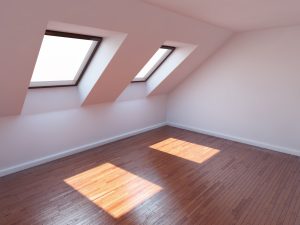Call Us : (801) 293-9014
[email protected]MONDAY - FRIDAY
8:00 AM to 5:00 PM
8:00 AM to 5:00 PM
Adding skylights to your home can bring in natural light from above, even in an interior room or in one where the windows are not arranged for the best natural light. In a bedroom or bathroom, they allow you to retain your privacy while getting more light,  and if your room needs venting or more airflow, you can even install models of skylights that open.
and if your room needs venting or more airflow, you can even install models of skylights that open.
Despite the beauty and functionality of skylights, there are a few factors to consider before you have them installed in your home. Skylight installation is something that works best when it is in the hands of a good contractor, and even then there are both pros and cons to consider.
How do Skylights Impact Energy Efficiency?
What is the impact on energy efficiency? Modern skylights, originally a single panel of glass, are now insulated windows that incorporate many properties to improve energy efficiency. For example, you can buy them tinted, coated to control UV rays and heat transmission, laminated, or tempered. Despite all this, skylights are still yet another cut into your housing envelope and another place where air can escape or come in if the window is not properly sealed. They have lower R values than the roof they are cut into, and can lose 35 to 45% more heat than a window installed on the side of your house would.
How Effective Are They?
Do they really let in more light? Skylights come in all sizes which impacts the purchase price, but often the installation costs do not vary much between sizes. A small skylight may not let in enough light to justify the cost, especially if it is not properly placed. To be effective, a skylight must be positioned on your roof to take the best advantage of light (and passive solar heating potential) that comes into the home from that angle. For example:
If your roof faces…you can expect…
Skylights take in light the opposite of how windows do, and bring in high angle rays in the summer and limit low angle rays in the winter. The net result can be a room that is hotter in the summer and dimmer in the winter than expected. Unless you want rugs and furniture to fade, you need to get tinting and even blinds or horizontal curtains to control the light.
Will They Leak?
Not surprisingly, one of the greatest risks of skylights is that they will leak. In the bathroom, moisture and humidity fog up skylights and this collects condensation, which can lead to rot and mold. Proper flashing, along with a layer of tar and felt or other ice and snow protecting materials help keep water away.
Even with those materials in place, the skylight poses other problems with roof ventilation and with ice and snow management in the winter. The skylight disrupts the flow of air from the soffit to the roof peak, which can attract moisture. In addition, since the skylight warms the area of the roof around it, snow that hits it tends to melt and can lead to ice dams - and leaks - in the winter.
Use an Experienced Contractor to Install Skylights
Modern skylight technology attempts to confront many of these issues, but the key is in having a reputable, experienced contractor who knows what he's doing where skylights are concerned. If you want to put a skylight in your home, Topp Remodeling & Construction can evaluate your proposed location, make suggestions, and then install trouble-free skylights.